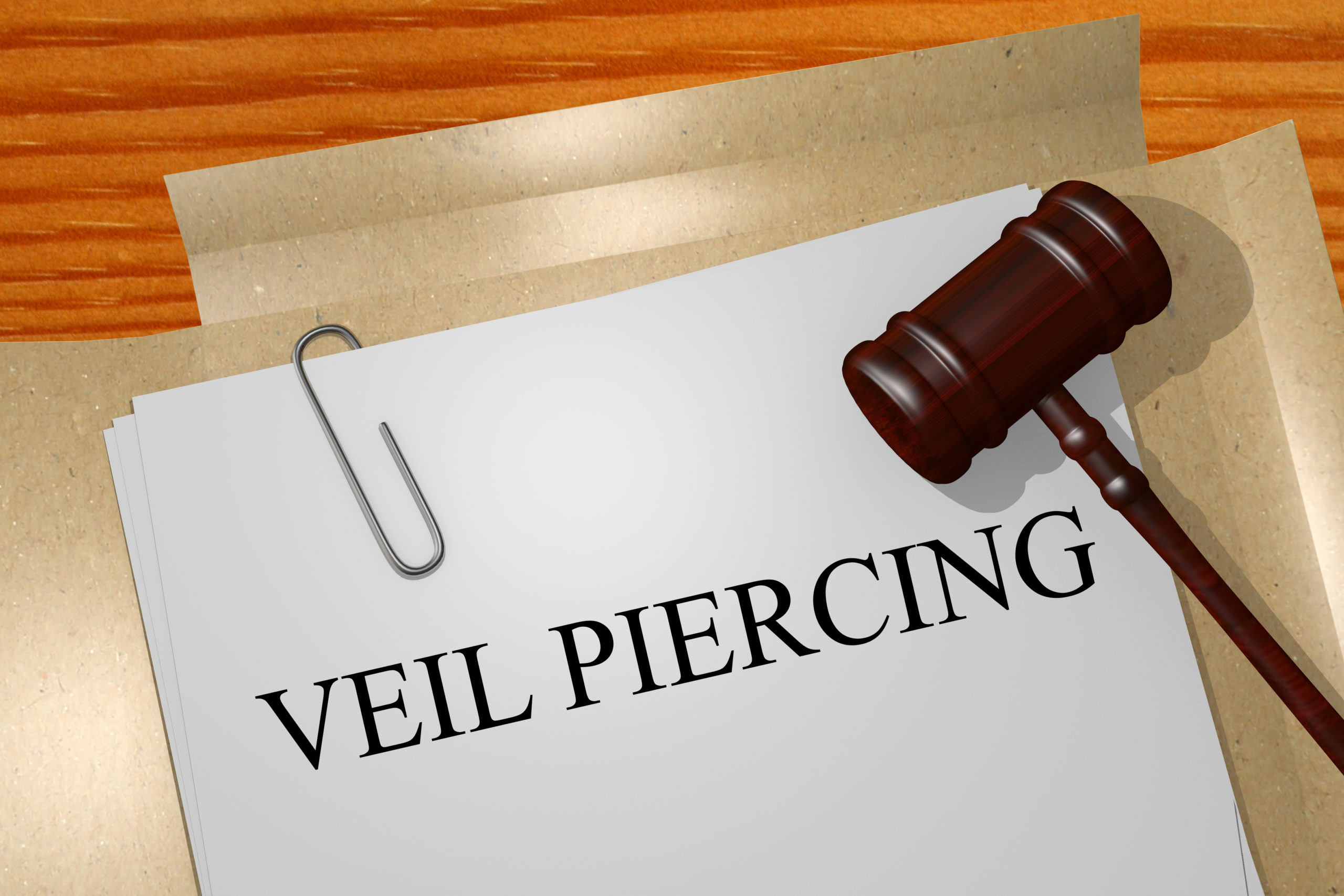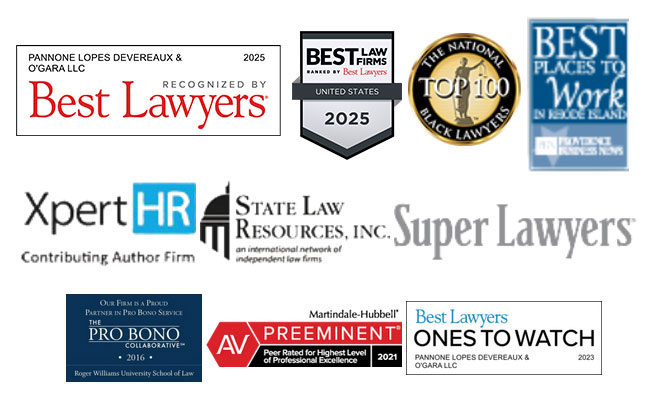The concept of “piercing the corporate veil” continues to be misunderstood and a highly litigated issue. As a general rule of law, corporations are legal entities separate from its shareholders and responsible for its obligations. However, under certain circumstances shareholders and officers could become liable for the liabilities of the corporate entity. In a case heard by the Supreme Court in 1926, Justice Cardoza stated, “We say at times that the corporate entity will be ignored when the parent corporation operates a business through a subsidiary which is characterized as an “alias” or “dummy.”1 This concept refers to a judicially imposed exception to the general principle by which courts disregard the corporate entity and hold the shareholder liable for the corporation’s actions.2
Creating the Corporation
The creation of a corporation or other form of business entity by entrepreneurs is essential to protecting themselves from personal liability; however, merely creating the entity does not guarantee this protection. Whether a Court makes a determination to permit a creditor to seek relief from shareholders differs from state to state. While there is no established formula, the primary theme in court rulings is to determine what is fair for all parties. This is a classic example of a debtor attempting to defraud its creditor. As with any area of the law, it is never as clear cut as it seems and there are copious amounts of debtor defenses to the very serious allegations of fraud.
As previously stated, a fundamental principle of corporate law is that the shareholders in a corporation are not liable for the obligations of the enterprise beyond the capital that they contribute in exchange for their shares.3 The corollary of this principle is that the corporation is an entity separate from its shareholders, directors or officers.4 The general concept of this principle is to protect the shareholders, officers and directors from the liabilities of the corporation, which encourages investment provided that the corporate entity is not created or used as a sham. In the case of United States v. Milwaukee Refrigerator Transit Co., the court outlined it reasoning for ignoring the corporate separateness by stating that it would occur “when the notion of legal entity is used to defeat public convenience, justify wrongdoing, protect fraud, or defend crime.”5
The Red Flags Courts Look For To Determine Liability
Courts have employed multiple reasons for imposing liability on shareholders for the acts of the corporate enterprise, which include undercapitalization, failure to follow corporate formalities, co-mingling of funds or overlapping of corporate or personal records, misrepresentations, lack of substantive separation of shareholder and entity (which would include parent-subsidiary), and use of the entity as an instrumentality of its shareholders.6
A familiar scene that may cause some scrutiny is when there are several related affiliates or multiple companies acting under the umbrella of one company and that company fails to maintain separate identities of all the various affiliates/companies. To narrow this down more, let’s use the example of when there is a parent company and a subsidiary company. The parent company operates and controls the subsidiary, provides all of the financing for the subsidiary, indicates the same officers, address, and corporate information, and files consolidated taxes with the subsidiary. See the red flags? The subsidiary can likely be accused of being the alter ego of the parent company.
In the case of Ocala Breeders’ v. Hialeah, Inc., the District Court of Appeal of Florida pierced the corporate veil to pursue the personal liability of corporate officers. The court found that the facts demonstrated the subsidiary was an instrumentality of the parent corporation; i.e., the same person controlled both the parent and subsidiary. It also determined that the parent and subsidiary operated out of the same facilities as the parent and that the subsidiary’s contracts were performed by employees of the parent company. It also noted that the subsidiary was never capitalized and it shared bank accounts and financial obligations with the parent. In order to pierce the corporate veil under Florida law, the court must find that a wholly-owned subsidiary is a mere instrumentality of the parent corporation and that the subsidiary was organized or used by the parent to mislead creditors or to perpetrate a fraud upon them. Thus, the court held that a parent corporation defrauded the plaintiff when its subsidiary entered into a contract requiring it to make certain capital improvements and the subsidiary did not have the ability to fulfill the contract since it was never capitalized.
The Importance of Separating the Entity
Courts will always scrutinize the relationship of a parent corporation and its subsidiary. It is therefore prudent for companies who set up a corporate scheme with a parent company and one or multiple subsidiaries, to ensure the business of the separate entities are kept separate, i.e. separate bank accounts and separate contracts.
This concept also applies when the owners or shareholders of the company continue to operate out of individual checking accounts, fail to recognize corporate formalities, and use the company’s assets as if they were individual assets. Owners, shareholders, and officers should avoid commingling funds and must treat assets of the business separate from personal assets.
The failure to adequately capitalize a company is not enough, in and of itself, to pierce the corporate veil. Courts will look to the assets of the company to determine if the company’s level of assets available to creditors is fair. The measure of assets is directly correlated to the business purpose so businesses are not all held to the same standard. When the company is created, it should have its own bank account with an adequate amount of money and/or assets to account for business operations. Owners cannot just open a business and use their personal account, with hopes of turning a profit and putting money back into the business.
In Conclusion
In determining the appropriateness of piercing the corporate veil, courts scrutinize corporate formalities. In cases where formalities are not properly followed, courts have held that the legal liability protection of the shareholders was effectively waived and the personal assets of the owners could be reached by the claimant. Family-owned businesses often tend to ignore corporate formalities, which is generally a financial issue vs. intentional neglect to comply with statutory requirements.
The decision to pierce the veil of a corporation to protect creditors is fact-driven and requires an examination of multiple factors outlined above. For further information on creating a corporate entity or other form of business, please contact PLDO Managing Principal Gary R. Pannone at 401-824-5100 or email gpannone@pldolaw.com.
_______________
Footnotes
1 Berkey v. Third Ave. Ry., 244 NY. 84, 155 N.E. 28 (1926)
2 Cornell Law Review, Volume 76, July 5, 1991, Piercing the Corporate Veil: An Empirical Study
3 Model Business Corporations Act
4 Cornell Law Review, Volume 76
5 United States v. Milwaukee Refrigerator Transit Co., 142 F. 247, 255 (1905)
6 Model Corporations Act


